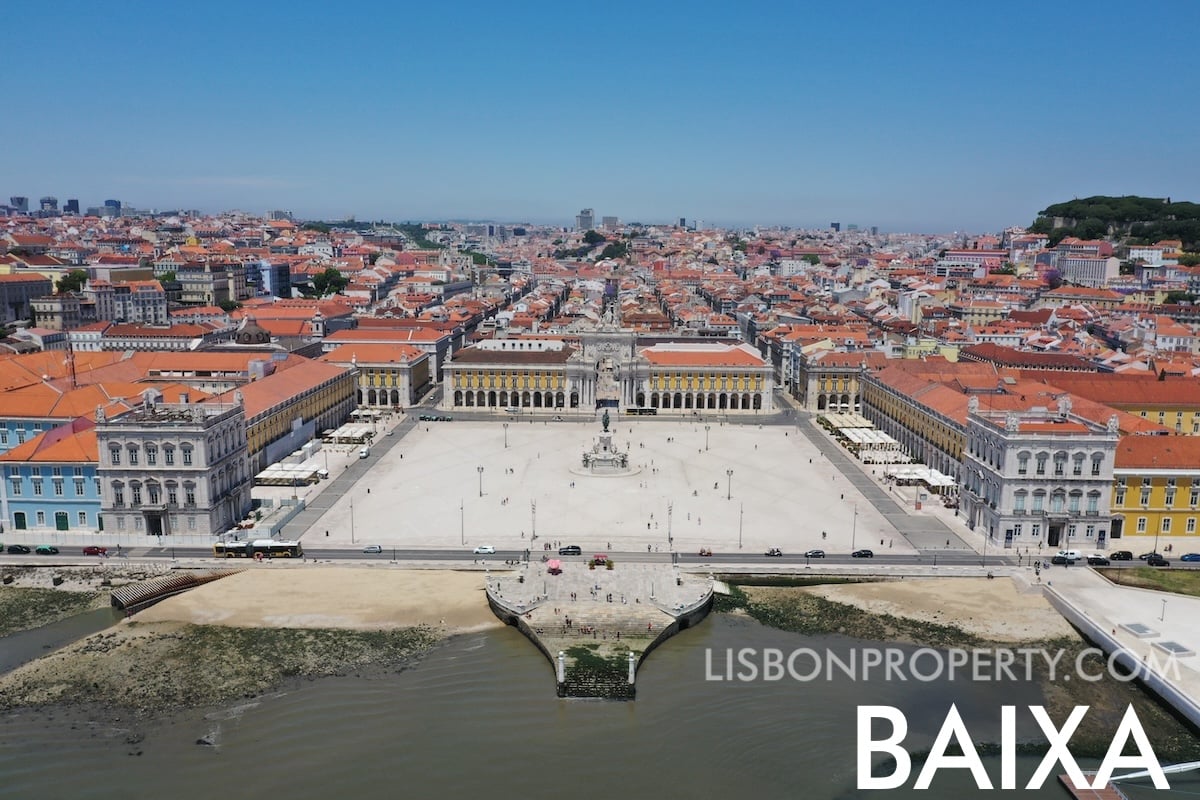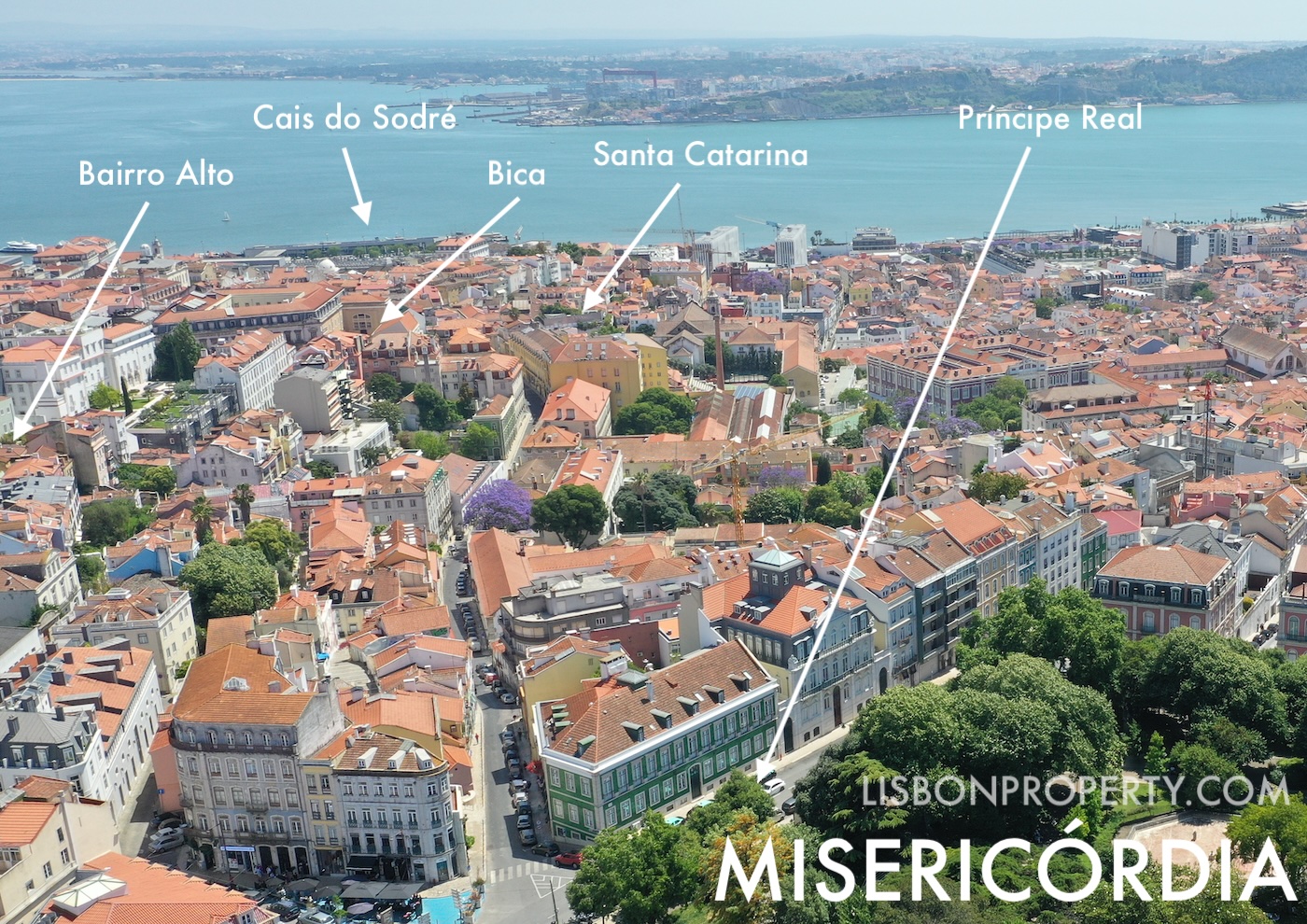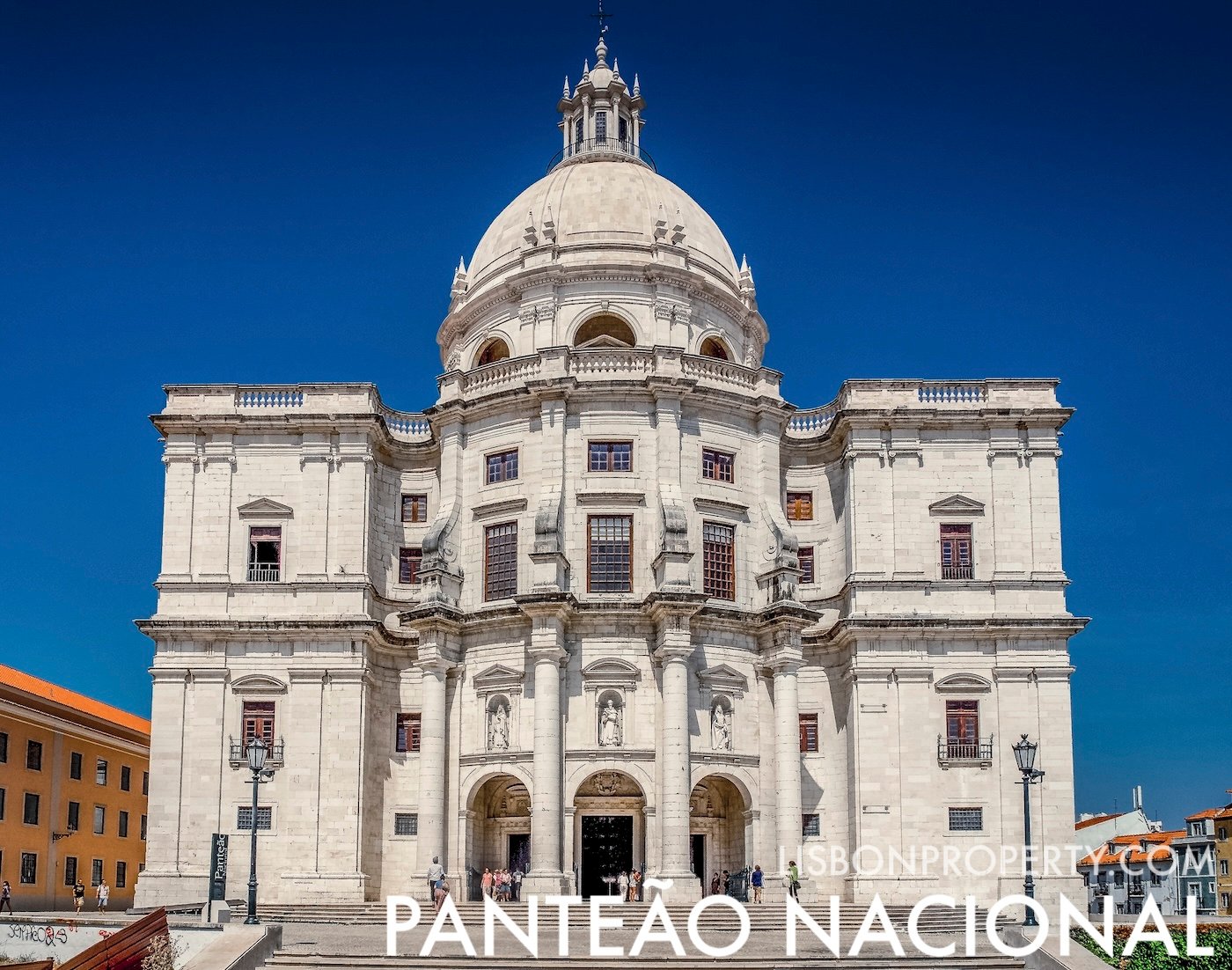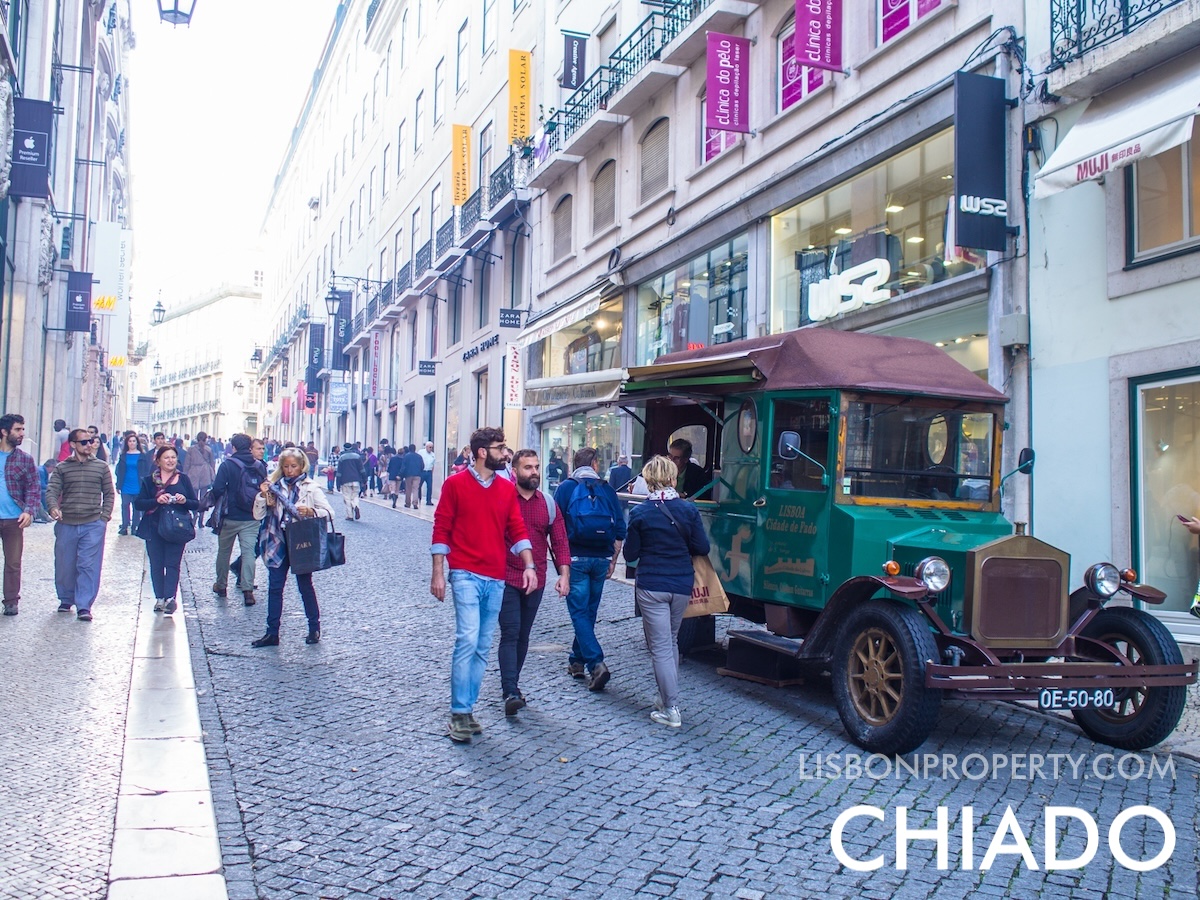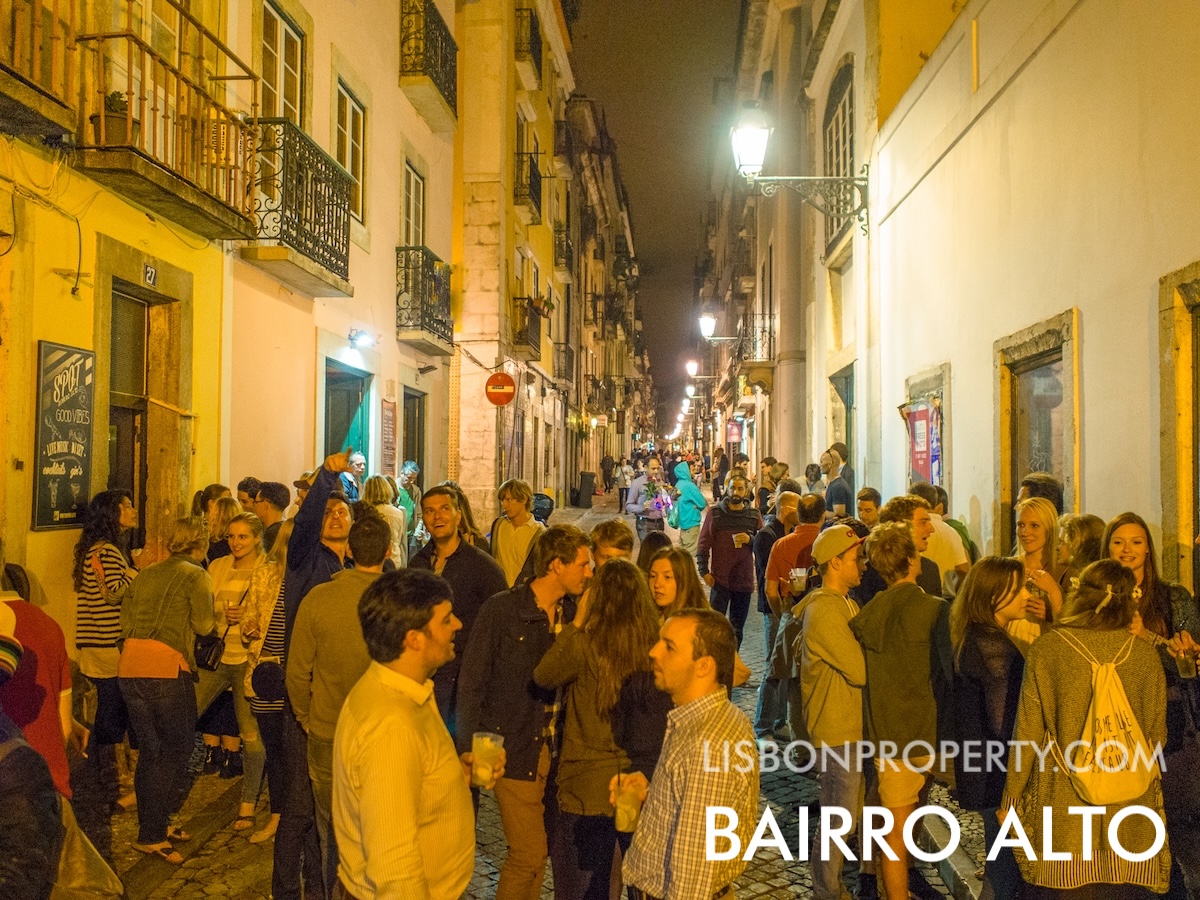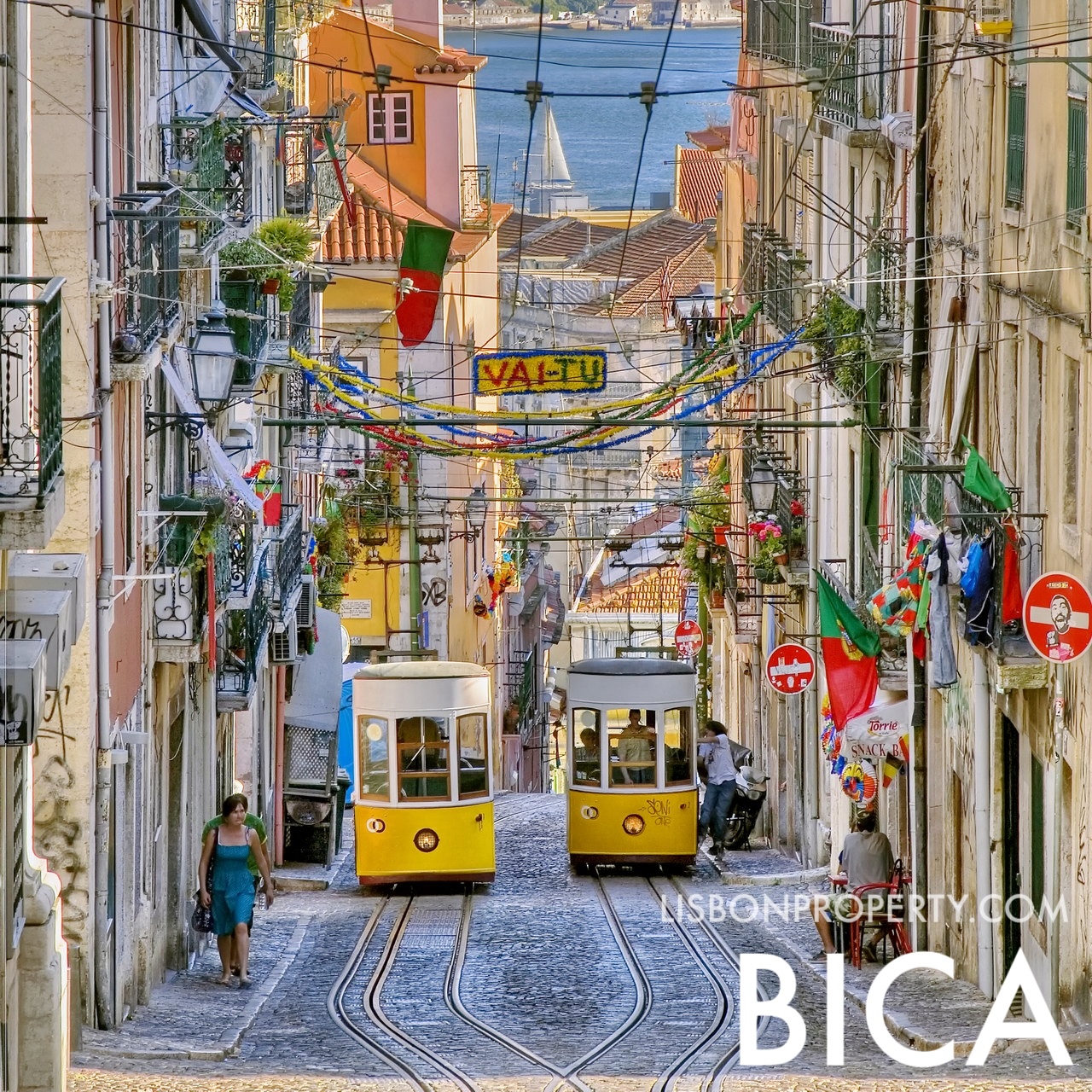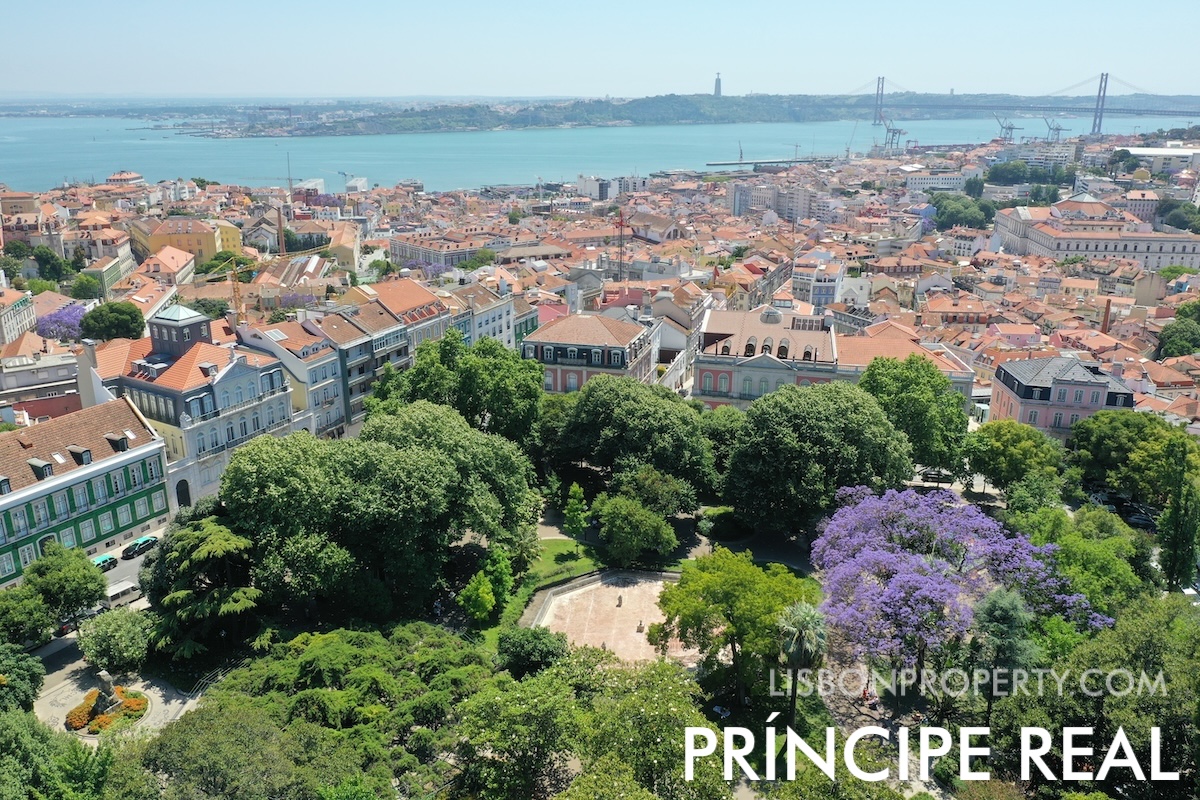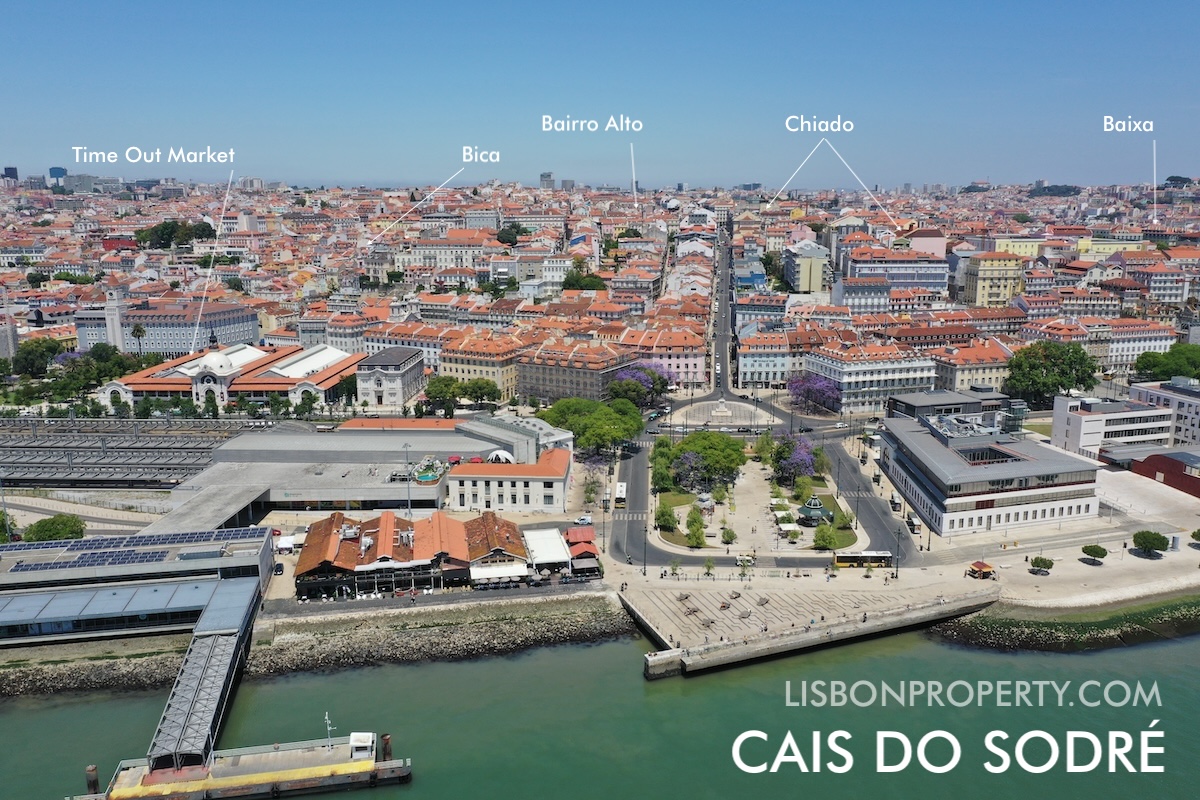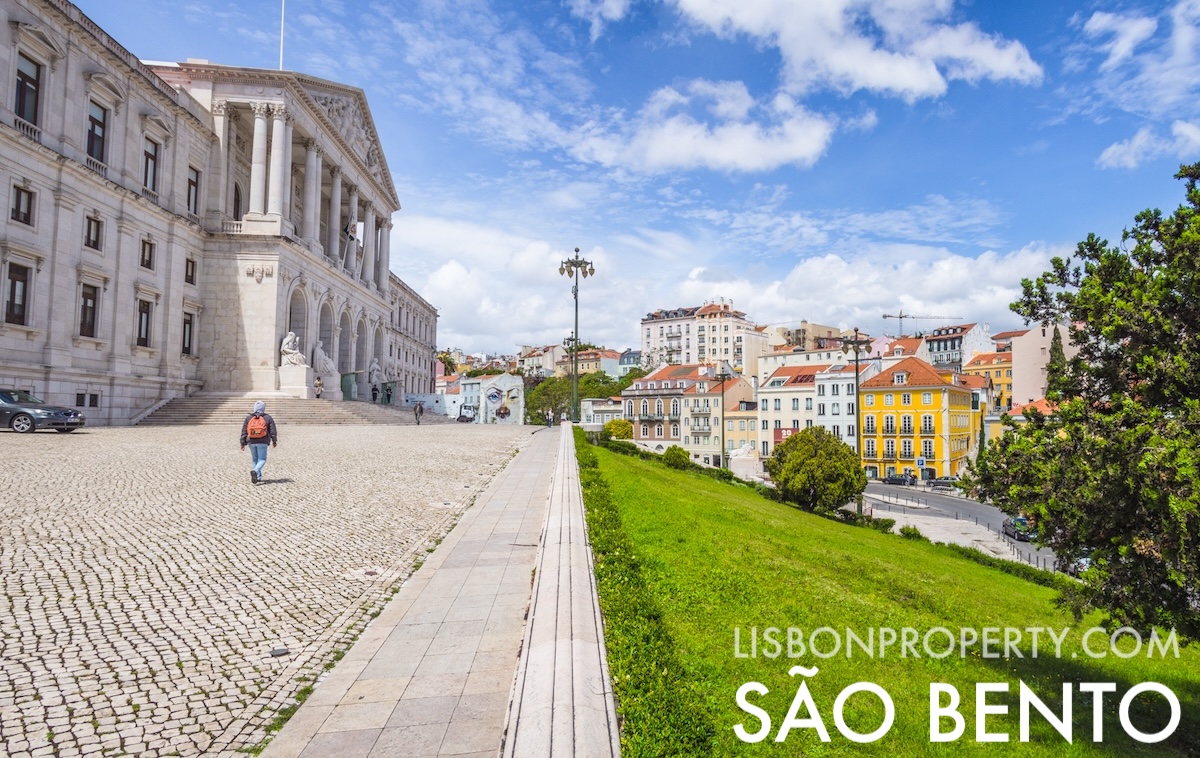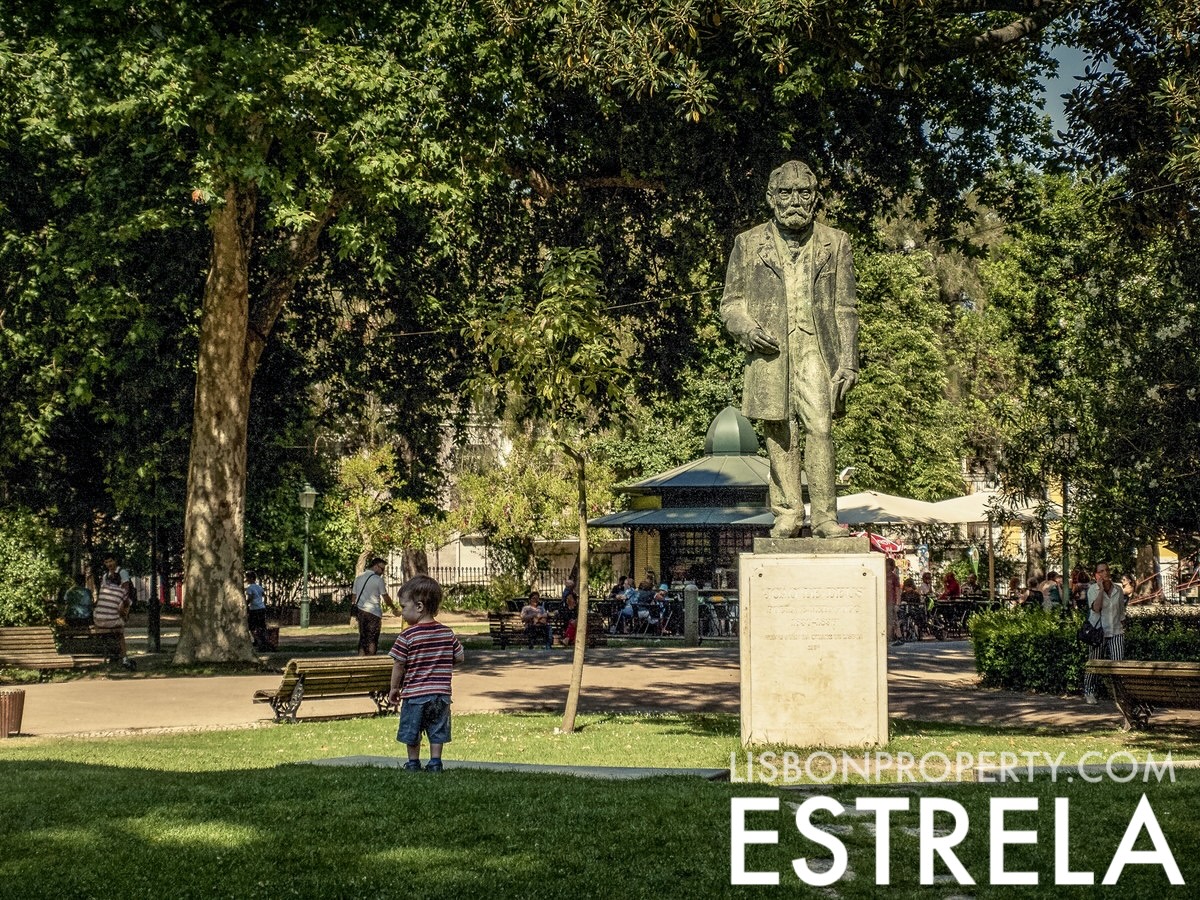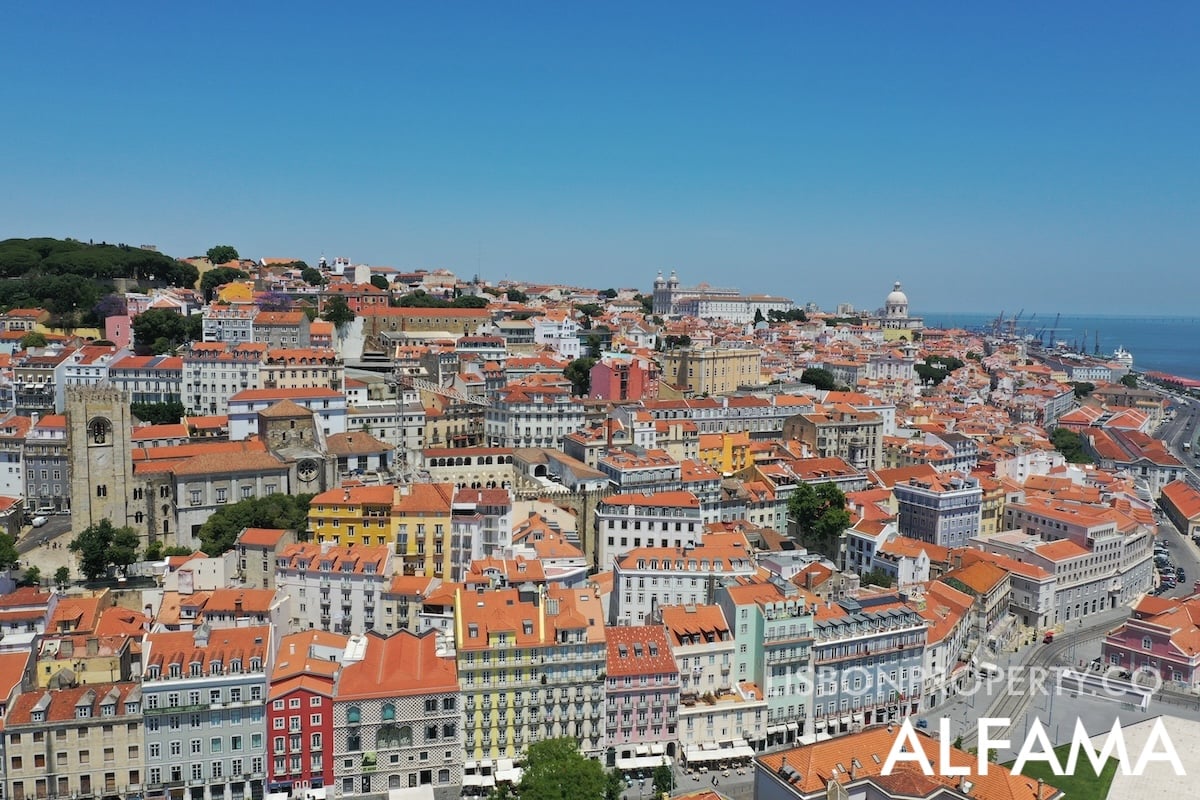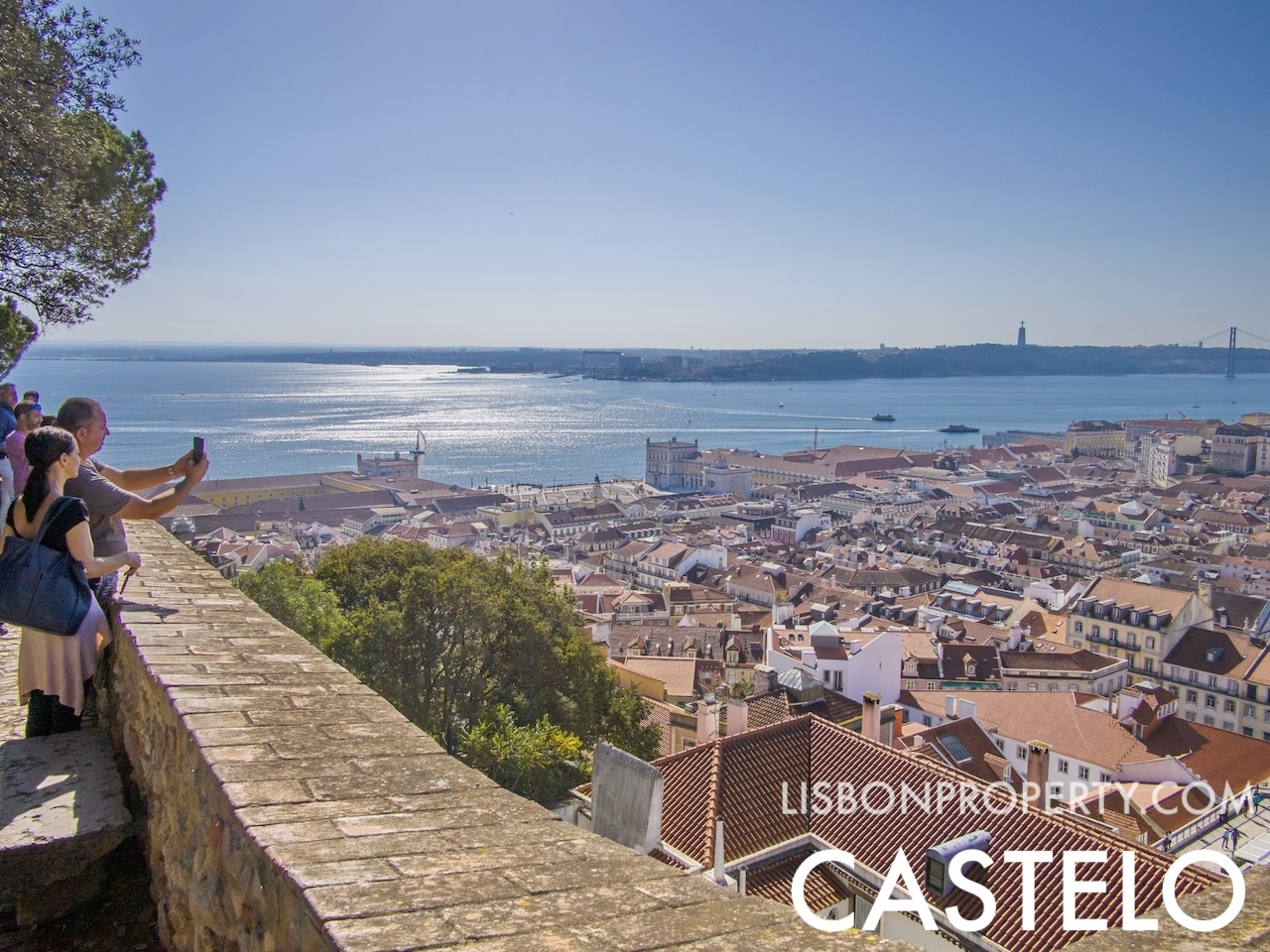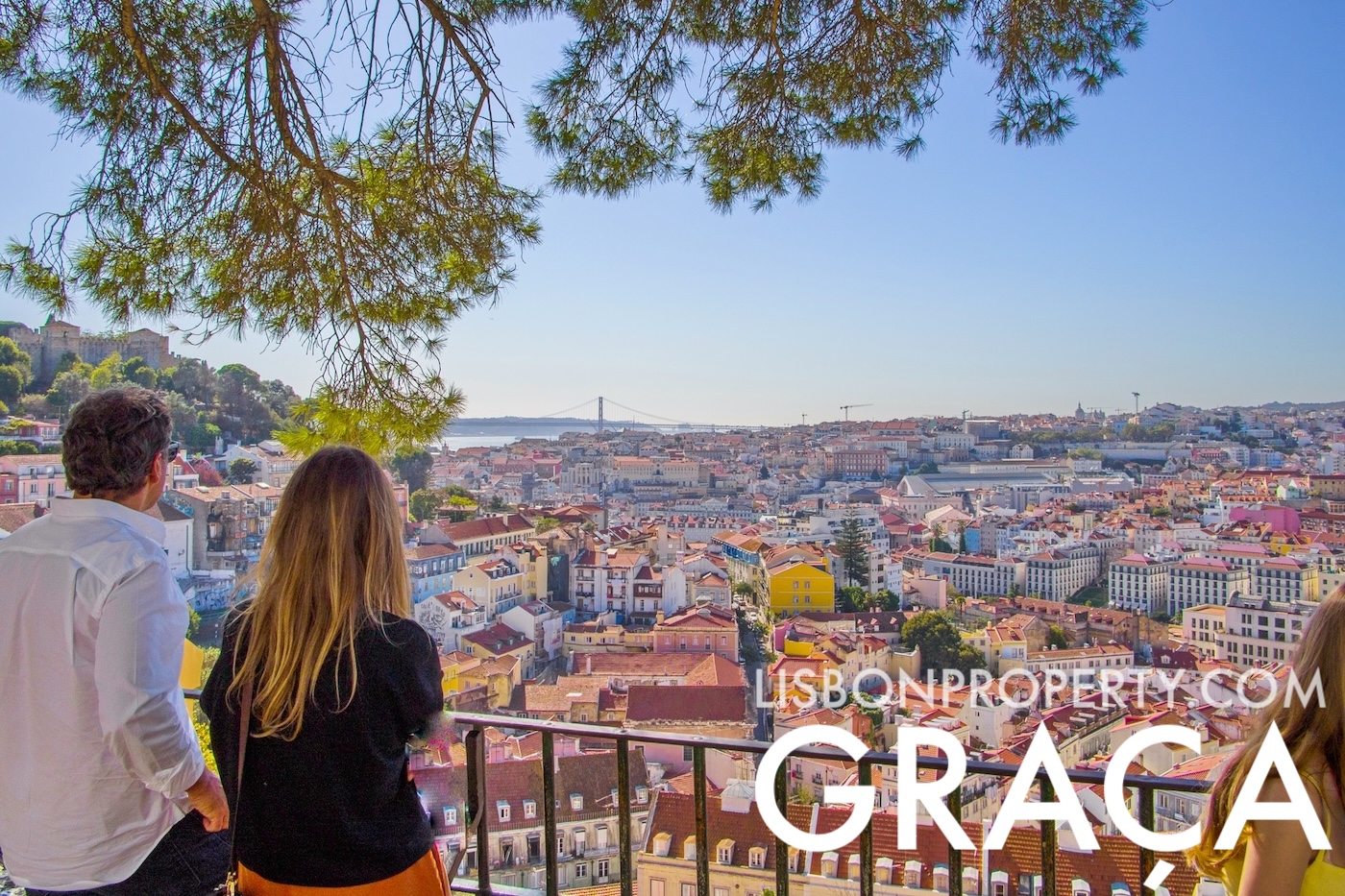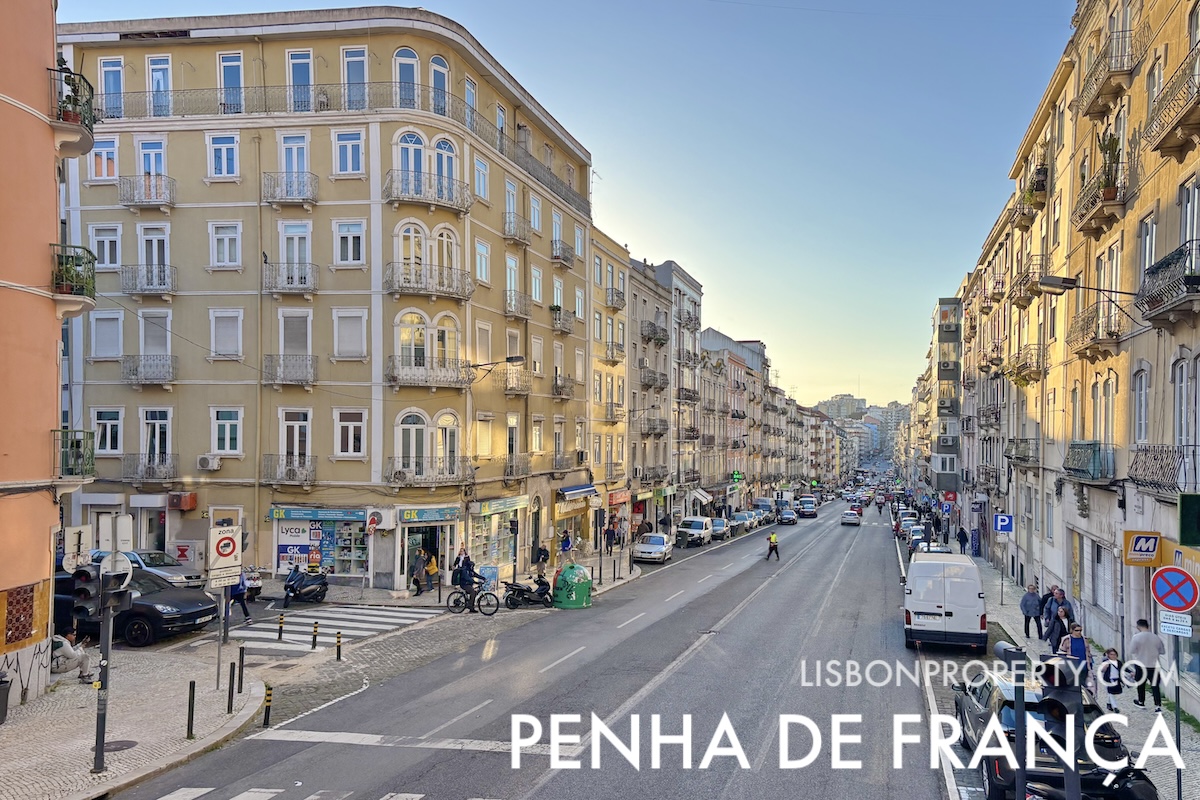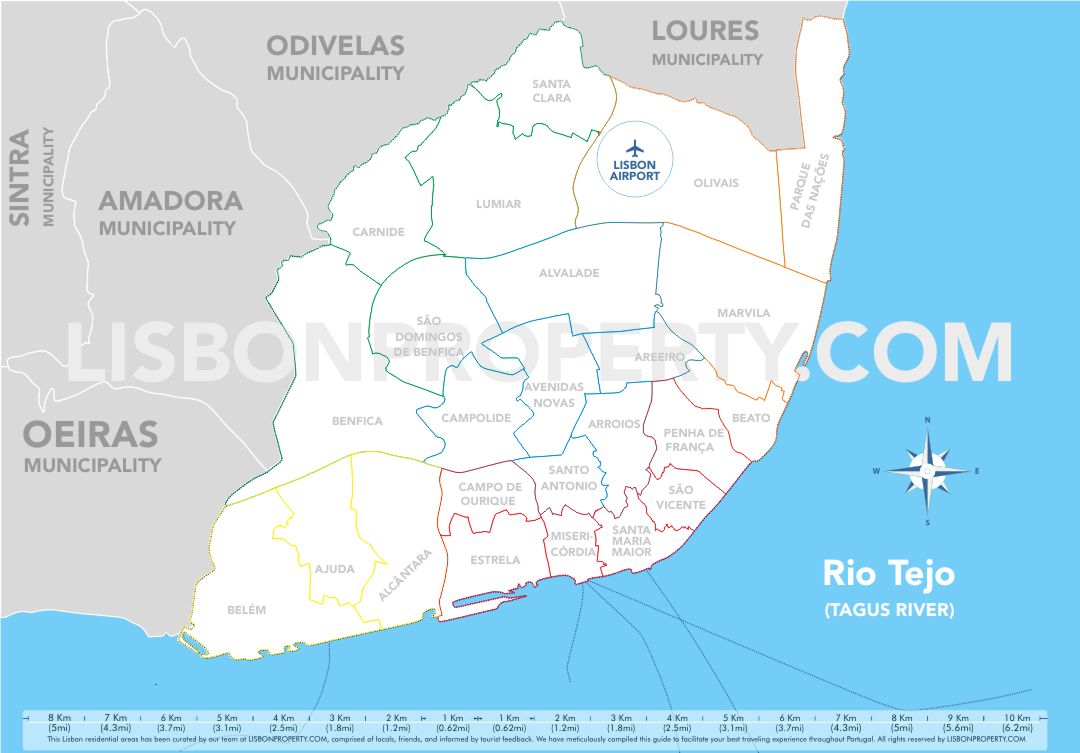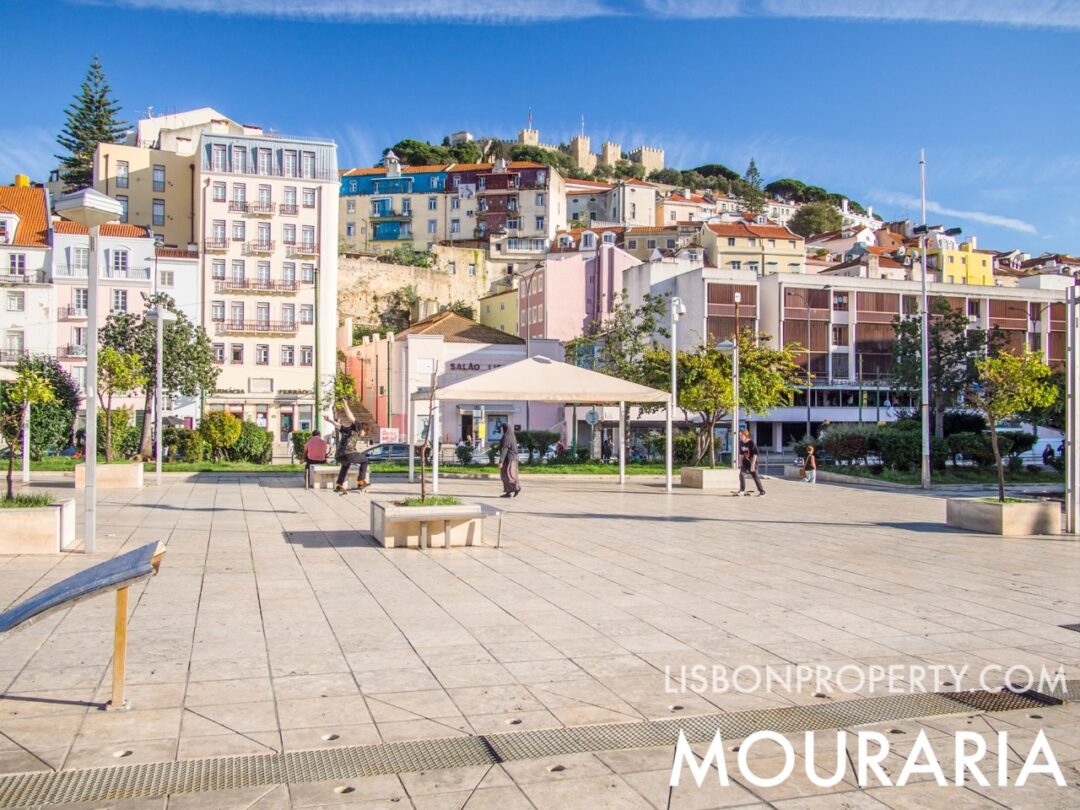
Mouraria neighborhood seen from Martim Moniz square
Mouraria is a very old neighborhood in the historic center of Santa Maria Maior in Lisbon. It is known as the birthplace of Fado. In Mouraria, the streets are narrow and winding, and you can see history all around. Local artists even create colorful street art, like the tribute from Camilla Watson.
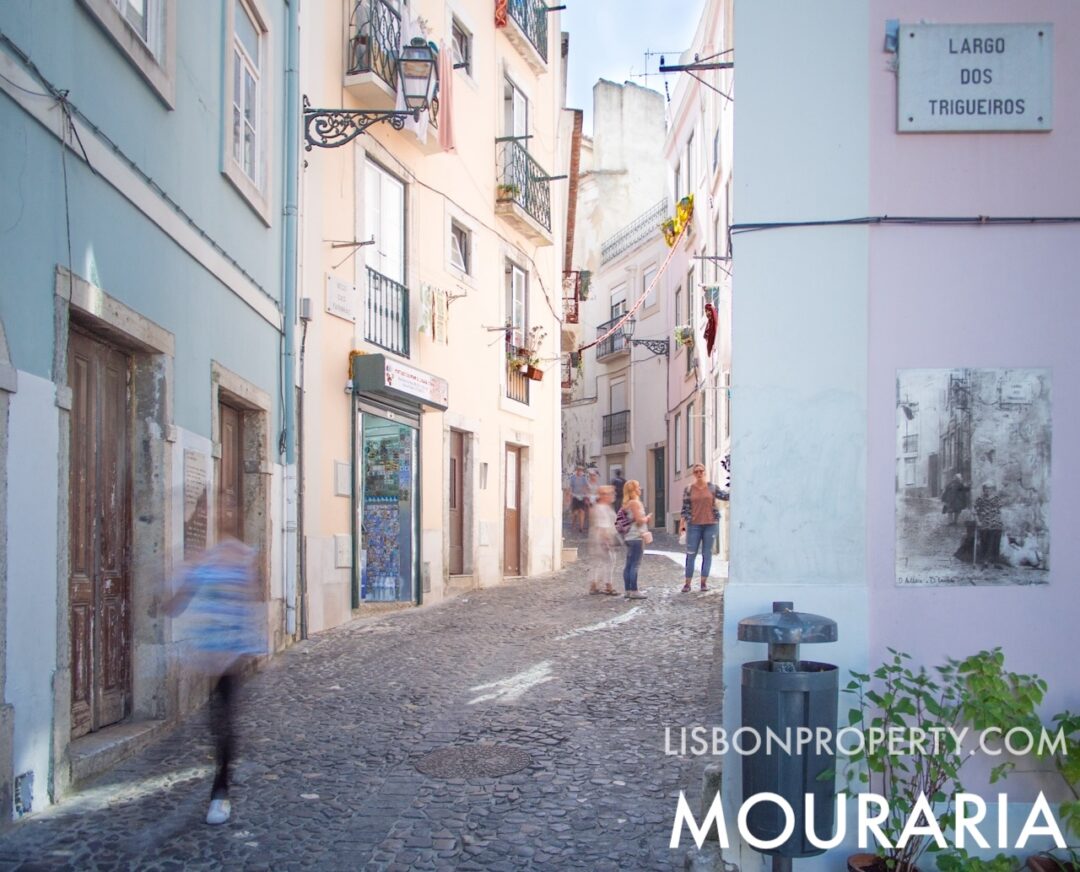
Camilla Watson’s tribute to the residents of Mouraria, with photographs of the residents displayed on the streets of Mouraria
There are many reasons to visit, such as the Fado Museum and local taverns where you can listen to live music. The area is set between the São Jorge castle hill at the top and downtown Martin Moniz at the bottom, and the streets are Rua da Mouraria, Rua Capelão, and Rua Cavaleiros.

The famous graffiti mural “Fado Vadio”, painted in Mouraria, located on the steps of São Cristovao, which portrays the history of the neighborhood, with Fado and prostitutes
In the past, Mouraria was known for its brothels, which shows a complex part of its history. Today, the neighborhood is celebrated for its rich culture and history.
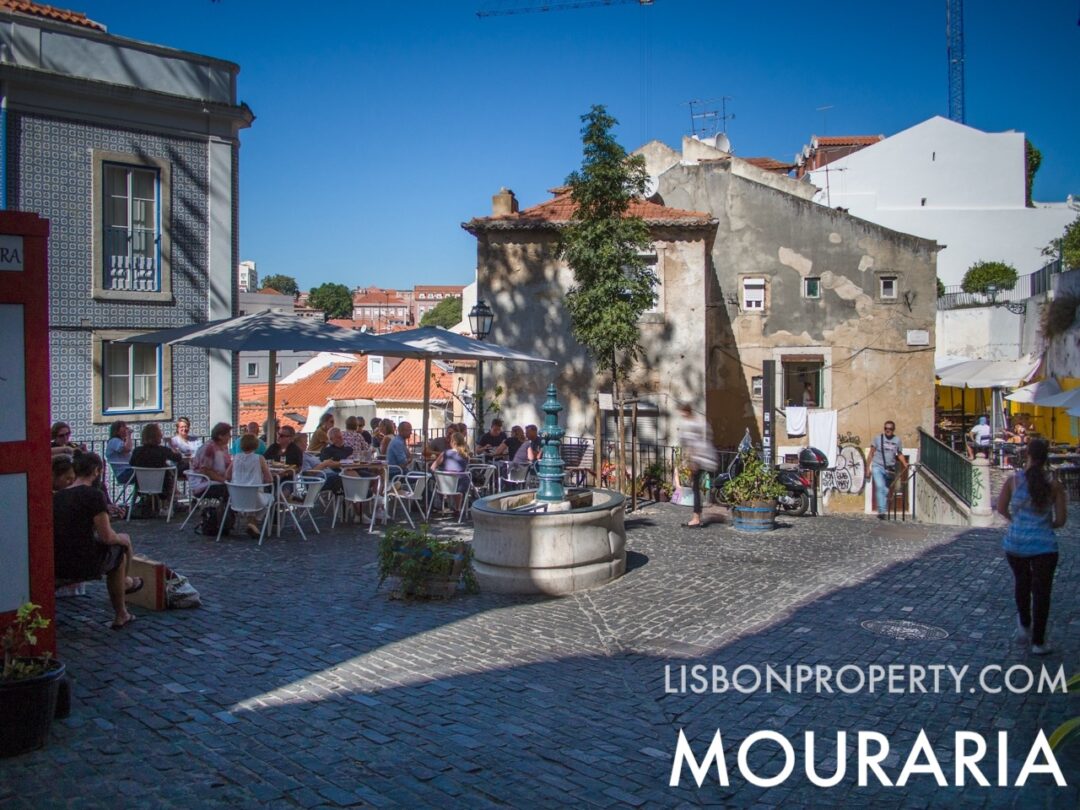
The peaceful atmosphere experienced today in Mouraria, with many tourists and locals enjoying the terrace at Largo dos Trigueiros in Mouraria


